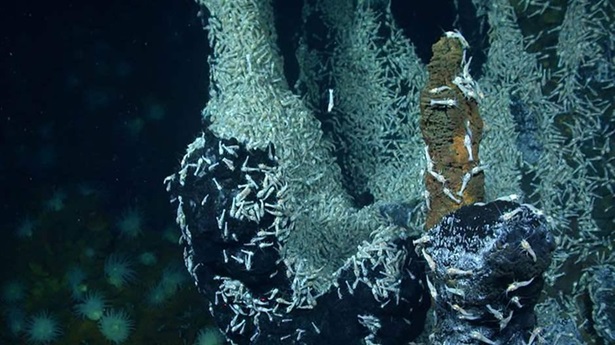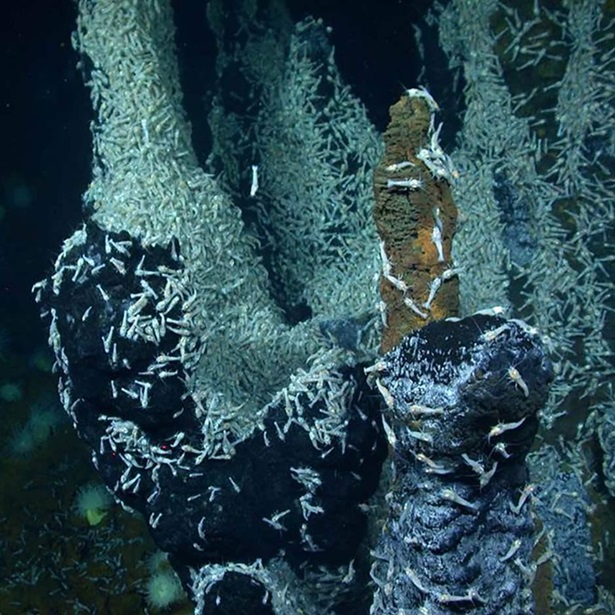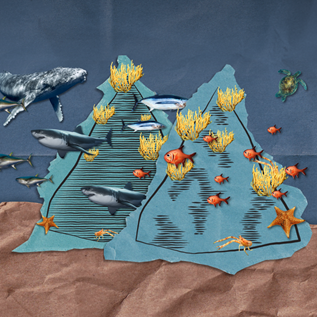Deep-Sea Mining Regulations Remain Far From Complete
Dozens of outstanding issues expose threats to ocean life, new study finds

Even as various companies and governments advance their plans to mine the deep seabed in international waters, the intergovernmental organization that regulates such activity is woefully short on the rules it needs to carry out its obligations.
That’s the core finding of a new study I co-authored, published in Marine Policy. In examining the status of draft mining regulations from the International Seabed Authority (ISA), we identified more than 30 major outstanding issues, such as how environmental impacts will be monitored and assessed. This analysis—together with the major gaps in scientific information on deep-sea ecosystems—shows that the ISA is a long way from being able to ensure that mining activities will not cause significant and irreversible harm to marine life.
The deep sea is a huge reservoir of biodiversity and contains critical habitat for marine species—many of which remain undiscovered. The deep sea also holds immense cultural significance, contains genetic resources that could have pharmaceutical and biotechnological applications and plays a vital role in fisheries health and climate regulation. Which is why it is so worrisome that the deep sea has also become the focus of what could be the largest-scale extractive industry in human history: deep-sea mining.
The ISA was established under the United Nations Convention on the Law of the Sea (UNCLOS) to be the custodian of the deep seabed and its resources, recognized as the "common heritage of [hu]mankind." The ISA missed its July 2023 deadline to adopt the exploitation regulations and now faces the possibility of evaluating, and even granting, a mining application without regulations. Meanwhile, there have been growing calls for a moratorium, or precautionary pause, on seabed mining by countries, Indigenous groups, scientists, conservation organizations, and others concerned about insufficient scientific knowledge of the deep sea. Many have cited the need for both robust regulations and more confidence in the ISA as an effective regulator.
Considering this, we sought to better understand the work left for the development of robust regulations and identified dozens of issues that remain outstanding because of divergent views amongst countries as well as a lack of information and time to further develop the regulations.
Below are some of those issues, which the ISA must address before the regulations could be adopted:
Protecting the marine environment: The ISA has an obligation under UNCLOS to ensure the effective protection of the marine environment from harmful effects caused by seabed mining. But it is unclear what this means in practice. There are some fundamental environmental policy issues that the ISA still needs to discuss, issues that scientists say could take years to decades to answer. For example, what level of harm, if any, is acceptable? How will impacts be assessed and monitored to ensure that regulatory thresholds are not exceeded? What science does the ISA need to have confidence that any approved mining application will not result in undue harm to the marine environment?
Enforcing the regulations: Regulations are only as good as the capability of the regulator to enforce them. Deep-sea mining poses a significant regulatory challenge: management of a new major extractive industry, hundreds to thousands of miles offshore and miles below the ocean surface, by an untested international regulator that will likely be heavily reliant on the enforcement capabilities of a miner's sponsoring country. How will the ISA ensure the enforcement and compliance of its rules? Will it require independent inspectors aboard vessels during operations? If violations are found or suspected, how and by whom can claims be brought forward? What damage is eligible for compensation or remediation, and who enforces that?
Sorting out payments: As these minerals are the common heritage of humankind, miners who remove them from the seabed will need to make payments to the ISA. The ISA needs to ensure that the rates charged are consistent with those of land-based mining operations. It must also ensure that payments will sufficiently compensate developing countries whose land-based mining economies have been severely affected by deep-sea mining, and that the monies received by the ISA are shared equitably with countries to compensate humankind for the loss of its common heritage—a calculation that must account for damages to the environment, including ecosystem services. The ISA continue to debate this contentious issue of what constitutes a fair and sufficient payment rate and have not yet begun meaningful discussions on how to ensure equitable, transparent payments to countries.
Our study shows that the regulations require significant further investigation and negotiation before they are completed. Based on this, the ISA must not rush the adoption of inadequate regulations that could pave the way to significant and irreversible harm to the ocean. Environmental risks from deep-sea mining are too great for haste, and this opportunity to put in place robust and enforceable regulations before an extractive industry begins should not be squandered nor the responsibility taken lightly.
The ISA should heed these concerns, implement a moratorium or precautionary pause, and thoughtfully consider the remaining regulatory and scientific gaps and proceed in a methodical and transparent fashion consistent with its custodial obligations.
Chris Pickens works on The Pew Charitable Trusts’ seabed mining project.














